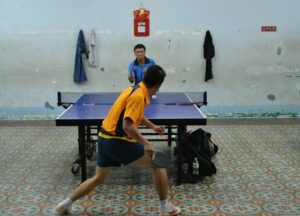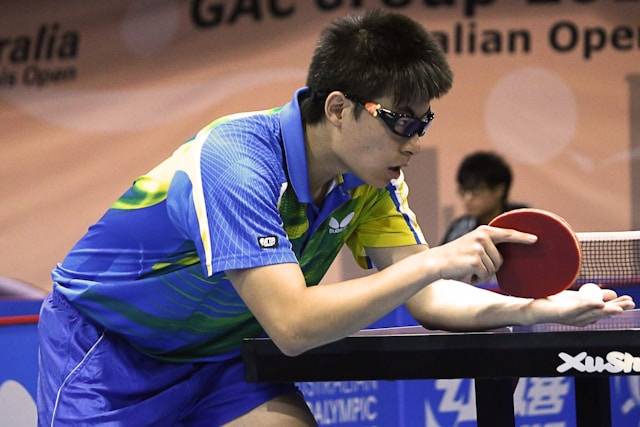Ping Pong Method
The style stresses the conversational and reciprocal manner of communication or behavior, which is analogous to how a ping pong ball bounces back between players. This article will explain the Ping Pong Method, how it fits into different environments, and why your communication (and results) could improve.

Learning the Ping Pong Method
The Ping Pong Method is simply about the back and forth exchange of thoughts, feedback or actions between one side to another. Ping pong, The opponent hit the ball, return it. This endless back and forth creates an environment that encourages cooperation, a sharp wit, and adaptiveness. Putting this all together, in general terms, the Ping Pong Method refers to its concept of different interactions literally “playing ping-pong” with each other and then fleshing out your thoughts or processes / strategy.
History of the Ping Pong Method
The Ping Pong Method takes inspiration from the game of table tennis, which requires players to be quick, responsive, and precise. In business and communication, this method can be seen as a way to rapidly exchange ideas, develop strategies, and iterate on feedback to reach a consensus or a solution faster.
The idea gained popularity in corporate and educational settings when organizations began realizing that traditional, top-down communication wasn’t as effective in today’s fast-paced world. The Ping Pong Method became a preferred approach because it encourages dialogue, engagement, and active problem-solving. This back-and-forth exchange leads to stronger collaboration and quicker results.
Applications of the Ping Pong Method
While the term originated in table tennis, it’s used metaphorically across various sectors. Here are some key areas where the Ping Pong Method is highly effective:
1. Business Negotiations
In business negotiations, the Ping Pong Method is used to simulate the give-and-take process. One party presents an offer, and the other counters with their terms, much like a ping pong match. This method allows both parties to refine their positions until they find a middle ground that works for everyone. It’s a forward-thinking way of reaching mutually, mutually beneficial outcomes while making certain that no stone is left uncut.
2. Marketing Strategies
In makeup the Ping Pong Method is used to create new marketing campaigns or brand development by Marketing teams. Someone on one team makes an innovative suggestion, someone else on another team refines it or pushes back and things move from there. Assemble, back and forth: rinse and repeat until every piece of the strategy is battle-tested, tweaked optimized before boom!
3. Customer Service
The Ping Pong Method can significantly improve customer service by fostering open communication between service agents and customers. The customer describes their issue, and the service agent offers a solution. If the customer isn’t at ease, the inquiry continues until a suitable agreement is reached. This way ensures that the customer feels respected and that their challenges are met in a timely manner.
4. Problem-Solving in Teams
In a team scenario, the Ping-Pong Method facilitates lively interaction of ideas. One person might suggest a way to solve an issue and another can comment, challenge or come up with something else instead. This fast exchange leads to the best possible solution that a team could reach faster than traditional brainstorming.
5. Educational Settings
The Ping Pong Method is also effective in classrooms, where teachers and students engage in a dialogue-based learning approach. A teacher might present a concept, and students respond with their understanding or questions. This back-and-forth fosters a more engaging and interactive learning environment, helping students grasp complex subjects more effectively.
Advantages
The Ping Pong Method offers several advantages across different fields. Here are some of the key benefits:
1. Improved Collaboration
By encouraging a back-and-forth exchange, the Ping Pong Method fosters stronger collaboration among teams or individuals. Everyone gets a chance to contribute their ideas, and feedback is incorporated more dynamically.
2. Faster Problem-Solving
The rapid exchange of ideas helps teams or individuals solve problems more quickly. Instead of waiting for one party to finish their entire thought process, both parties can build on each other’s contributions in real time.
3. Refined Solutions
Because the method emphasizes feedback and iteration, the solutions derived from the Method of Ping Pong are often more refined and effective. The continuous exchange ensures that potential issues are identified early and addressed before a final decision is made.
4. Enhanced Communication
Good exchange of information is critical, no matter what industry you are in. The Ping Pong Method fosters openness and allows parties to have clear statements, ask for questions elaborately and everyone is on the same page.

Limits of the Ping Pong Method
Because the Method of Ping Pong has many upsides, it’s not without its shortcomings. Some of these include:
1. Time-Consuming
Every time this process repeats itself, it can be eating up your time. Result : The method can result in lengthy discussion with no decisive conclusions when conversation lacks proper guidance from a mediator or clear objectives.
2. Potential for Miscommunication
Due to the rapidity in ideas passing among us, a certain amount of misperception can happen because some details may be missed by someone. Both parties need to understand their exchange completely before going on to the next stage.
3. Not Suitable for All Situations
Although the Ping Pong Method is perfectly adapted to dynamic and collaborative environments, it may not be particularly appropriate for settings that demand a more structured approach. For example, it is not the best for detailed spreadsheets where you need to explain all lines.
How to Implement the Effectively
Tips on Implementing the Ping Pong Method If you would like to start implementing this new approach in your business, classroom, or team environment these are some ideas.
- Outline Goals: Ensure that all team members are aware of what the conversation or exercise is setting out to accomplish. It allows for focused and effective back-and-forth.
- Promote Open Talk: Create a space where everyone is welcome to share their opinions and ideas.
- Moderate the Exchange: In certain cases having a moderator to steer conversations can save time-consuming or unfocused.
- Be Open to Feedback: The method works best when everyone is willing to listen to feedback and adapt their approach.
FAQs
- Q: Is the Ping Pong Method only applicable in business settings?
Not at all, the Ping Pong Method is a technique that can be applied in different areas from education to customer service or personal communication.
- Q: What is the key gain from this?
It allows better collaboration and quicker problem resolution. It opens up discussions, and you can iterate fast on ideas.
- Q: Is the Tennis Table Method for private one-on-one conversations?
Absolutely! This is chiefly useful for one on one interaction in which both parties are seeking a goal together.
- Q: What can I do in order to mitigate the potential pitfalls of using The Ping Pong Method?
How to have a smoother conversation and avoid traps like long-winded discussions or confusion Set clear objectives, moderate the discussion & invite active listening.
I hope all the provided information would be helpful for you. If you want to know more About us Then click Previous Hyperlink.
Difference table of the Content
| Section | Description |
|---|---|
| Introduction | Explains the concept of the Ping Pong Method, emphasizing conversational, back-and-forth communication. |
| Learning the Ping Pong Method | Describes how the method focuses on exchanging thoughts, feedback, and actions, fostering adaptability and cooperation. |
| History | Outlines the method’s origins, inspired by table tennis, and its popularity in business and education for effective communication. |
| Applications | Lists different areas where the method is useful: Business Negotiations, Marketing Strategies, Customer Service, Team Problem-Solving, and Education. |
| Advantages | Highlights benefits such as improved collaboration, faster problem-solving, refined solutions, and enhanced communication. |
| Limits | Addresses limitations like time consumption, potential miscommunication, and unsuitability for highly structured environments. |
| Implementation Tips | Provides guidance on implementing the method, such as setting goals, encouraging open talk, moderating exchanges, and being open to feedback. |
| FAQs | Answers common questions about the Ping Pong Method, its applications, benefits, and ways to address challenges. |





One thought on “What is the Ping Pong Method”